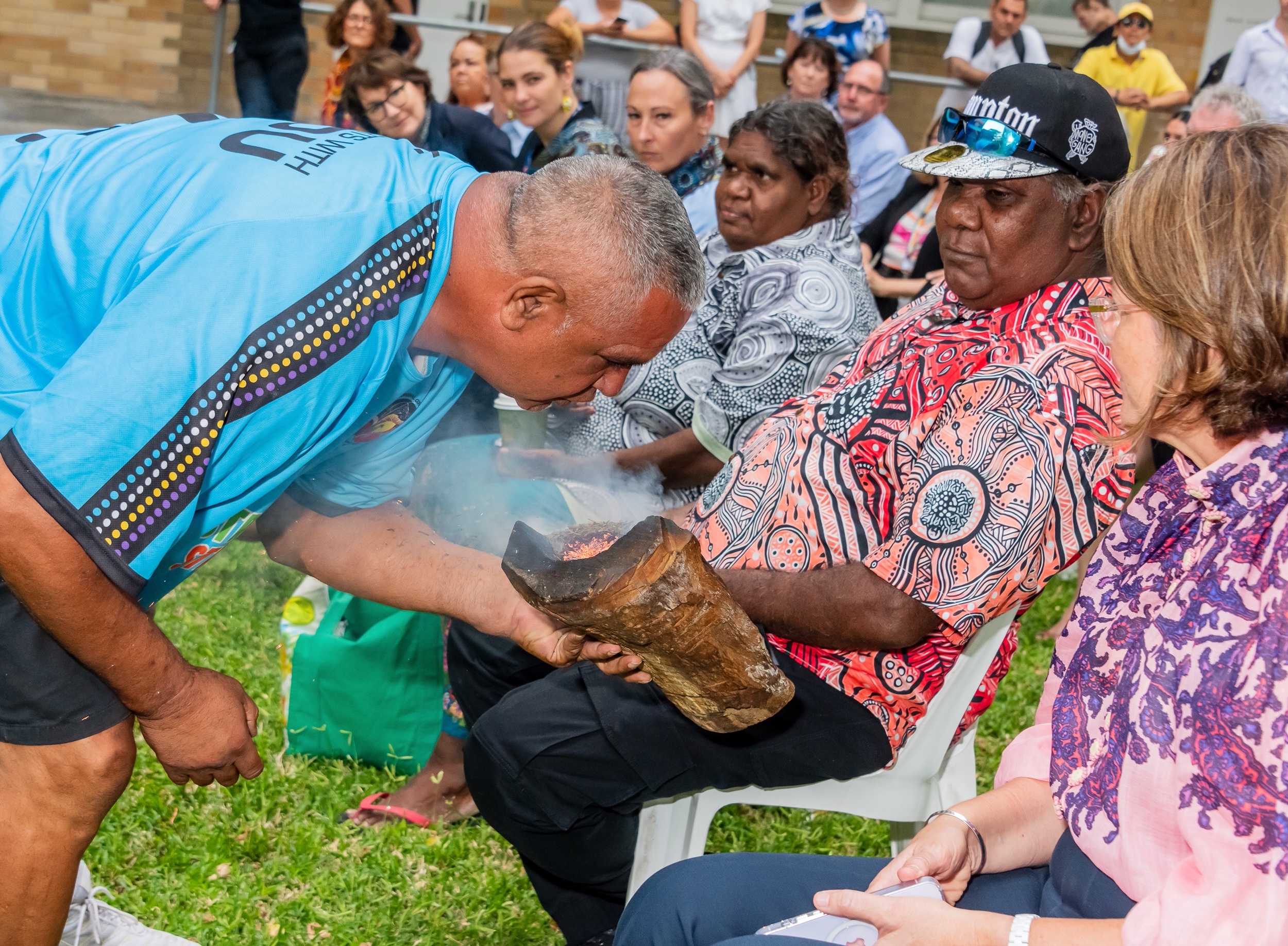
Community benefits from Ngangkari healing
Sydney Local Health District Aboriginal cultural events held in partnership with Chris O’Brien Lifehouse.

After a night of poor sleep, Aunty Bronwyn Penrith was glad to be able to take part in a traditional Aboriginal healing session.
“I was kind of tired and dragging when I came in and now, I’m smiling all the time. I feel like a bit of weight has lifted, although no words were really spoken,” she said.
Aunty Bronwyn, who is Chair of the Mudgin-Gal Aboriginal Women’s Corporation, was one of many community members who experienced a healing by Ngangkari healers during a recent program of cultural immersion hosted by Sydney Local Health District in partnership with Chris O’Brien Lifehouse and supported by Cancer Institutea NSW.
Ngangkari is a Pitjantjatjara word that means traditional healer.
Healers Uncle Cyril McKenzie from Ernabella in the Anangu Pitjantjatjara Yankunytjatjara (APY) lands in the remote north-west of South Australia, and Aunty Debbie Watson, from Pipalyatjara in the APY lands, held sessions with both Aboriginal and non-Aboriginal people during their two-week stay in the District.
The consultations, held at Chris O’Brien Lifehouse, were a space for the Ngangkari to provide clients with physical, emotional and spiritual support, employing healing practices traditionally used by First Nations people.
“The Ngangkari connect ancestors to ancestors and, in a way, allow the individual to heal themselves,” explained Dr Clayton Spencer, a patron of the Anangu Ngangkari Tjutaku Aboriginal Corporation, the organisation which Uncle Cyril and Aunty Debbie represent.
“Modern health settings are built on what has come before us and what people have been doing for a long, long time,” Professor Michael Boyer AM, an Oncologist and the Chief Clinical Officer at Lifehouse, said.
“Although we have a framework within which we work in modern healthcare, we should never lose sight of traditional healing that has been going on for a very long time.”
Reflecting on his own healing experience, he added, “It was very restful, very calm and really gave me a chance to sort of get out of myself and take a few moments to be calm.”
The cultural immersion event was held to emphasise the value of culture in healthcare and to engage and empower the District’s Aboriginal community.
It also included Aboriginal cultural activities such as dance and art workshops, yarning circles where community members could connect and discuss issues relating to health and healthcare, and a First Nations sound healing session.
It was launched with an opening ceremony held on the King George V Lawn at RPA, attended by NSW Health Secretary Susan Pearce, the District’s Chief Executive Dr Teresa Anderson, Lifehouse CEO Eileen Hannagan, members of the District’s board and guests from Lifehouse and the Aboriginal Medical Service Redfern.
The ceremony featured a Welcome to Country by the Metropolitan Local Aboriginal Land Council and a performance by the Brolga Dance Academy.
“It’s wonderful to celebrate traditional healing in a place that provides such amazing clinical care and to recognise that those two things need to come together,” Dr Anderson said.
Summing up the value of the Ngangkari healing sessions, Aunty Bronwyn was clear, “The benefit of traditional healing is that people will get better and heal their spirit,” she said.